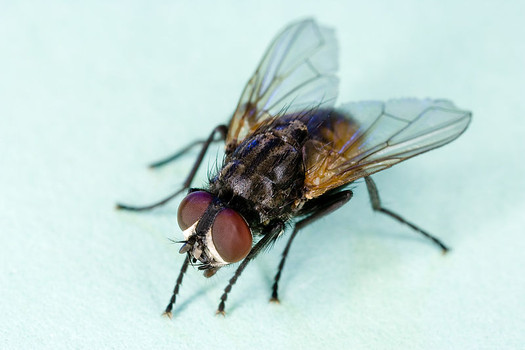A global consortium of scientists have sequenced an analyzed the genome of the house fly, Science Daily reported today. The genome could give insights into a variety of areas, such as pathogen immunity, pest control, and waste management.
The house fly (Musca domestica) is a common pest around the world. It is an important decomposer of both human and animal waste, but it is also a vector for such diseases as typhoid, tuberculosis, and parasitic worms.
Scientists sequenced the genomes of six female house flies in order to understand what genetic factors allow the insects to live in toxic environments, and to gain more insight into how they spread diseases. The resulting sequence was 691 Mb long, far longer than the sequence of Drosophila melanogaster, the fruit fly, whose genome measured in at 123 Mb.
The differences between the two flies are telling. The house fly genome contained a variety of unique immune genes compared to the fruit fly. Further study into these genes could help scientists understand how the fly fights off the diseases it carries, leading to better treatments or vaccines. House flies also have unique genes that produce proteins that help the flies break down human waste. Understanding how these genes work could lead to innovative methods to handle human waste, a growing problem around the world.















